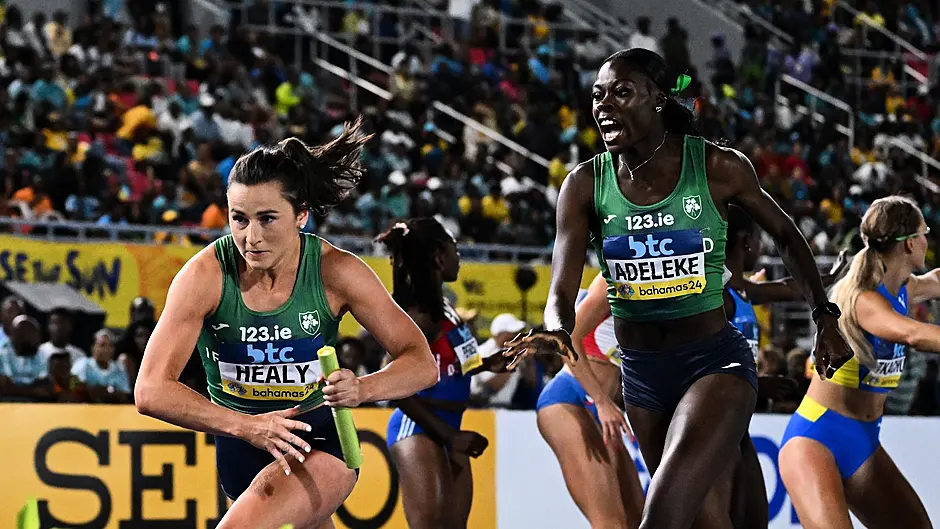Former Irish sprinter Joan Healy breaks down the four legs of a 4x400m relay
LEG ONE: The first leg is great because you get to stick in your own lane the entire way around. At the same time, there's a lot of responsibility on that first leg runner, trying to get the team off to a really good start. The thing about the 400, especially the relay, it's really hard to see with the stagger in terms of where you are. When you're coming down the home straight and you look like you're doing really well, but the changeover is up the bend a little bit, again, for your second leg runner and it's a little bit away from where the traditional finish line would be for a 400. So it's hard to grasp. You really have to dig in there and try and get your second leg runner into the best possible position.
LEG TWO: The thing then with the second leg runner is that when you're in a stadium and the atmosphere is unreal and you're buzzing, just raring to go, it's really hard to control that energy, especially over that first 100 metres, because you just want to tear off. The buzz kind of takes over your body, really. It's about staying calm, staying resolved, just sticking to your race plan, getting off the bend and getting into a position where you can gradually cut in. You still have to be very aware of the people on the outside and inside lanes. People are going to cut across you and people cut across quite sharply, which can put off your stride pattern. Or people can get spiked and stepped on. You really have to be careful and you have to be measured and reserved in your efforts going in there. Once you're in that position, then it's about executing your typical race plan and you want to stay in touch with the leading group, but you don't want to get carried away down the back straight and leave yourself with nothing from 300 metres on.
LEG THREE: Every leg is difficult because whatever work has been made or ground they've made up on the first and the second leg, the third leg runner has to ensure that you don't lose that ground and that you try to make up more. But also, if a bit of ground has been lost on the second leg, then there's a big responsibility on you to try and pull that ground back. Again, it's important as well for the third leg runner when they start off that they don't all guns blazing and there's nothing left in the tank for the latter end of the leg.
LEG FOUR: The fourth leg person obviously then has massive responsibility of either holding the position if they're in a medal position or a qualifying position or getting them up into a qualifying position. But also, again, keeping a very measured race, knowing where your strong points are. If someone is way out ahead of you, that you don't try chasing them, that you start picking them off one by one if you're in a position where you're coming from behind. If you're not in the position and you're out ahead, then it's important that, again, you stay really measured and you make sure you're leaving something in the tank for the last 100 so that people behind you don't kick with something and you have nothing left to give. Also there are screens all around the stadium, but specifically, when you come down the home straight, you can see the screen out in front of you so you can see where everyone else is in the race. It's important to obviously not get confused about that – you want to keep one eye on that and you want to get a feeling of where people are around you anyway. But you do need to be aware of where everyone is and that you're not going to get boxed in coming down the home straight because everyone is battling in the same lane. And then you obviously don't want to run too wide. There are a lot of things at play.











